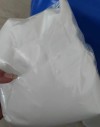

Introduction
Theophylline (1,3-dimethylxanthine) is a naturally occurring alkaloid that belongs to the class of methylxanthine compounds. It is a bronchodilator used in the treatment of asthma and chronic obstructive pulmonary disease (COPD). Theophylline is a powerful stimulant of the central nervous system, and its use has been associated with a wide range of pharmacological effects. This article aims to provide a detailed overview of theophylline, including its chemical structure, pharmacokinetics, therapeutic uses, adverse effects, and drug interactions.
Chemical Structure
Theophylline is a white, crystalline powder with a molecular weight of 180.16 g/mol. Its chemical structure consists of a xanthine base with two methyl groups at positions 1 and 3. Theophylline has a melting point of 271-273°C and is sparingly soluble in water.
Pharmacokinetics
Theophylline is rapidly absorbed after oral administration and reaches peak plasma concentrations within 1-2 hours. The bioavailability of theophylline is affected by various factors, including age, smoking, and food intake. Theophylline is extensively metabolized in the liver by cytochrome P450 enzymes, primarily CYP1A2, to form three major metabolites: caffeine, 3-methylxanthine, and 1-methylxanthine. The elimination half-life of theophylline ranges from 4-8 hours in healthy adults but may be prolonged in patients with liver or kidney disease.
Therapeutic Uses
Theophylline is primarily used as a bronchodilator in the treatment of asthma and COPD. It works by relaxing the smooth muscles of the airways, which reduces bronchoconstriction and improves airway function. Theophylline is also a mild diuretic and can be used to treat edema associated with congestive heart failure. Additionally, theophylline has been used as a central nervous system stimulant and in the treatment of apnea in premature infants.
Drug Interactions
Theophylline is metabolized by the cytochrome P450 system, and its pharmacokinetics can be affected by a wide range of drug interactions. Drugs that induce the activity of CYP1A2, such as smoking, rifampin, and phenobarbital, can increase the metabolism of theophylline and reduce its effectiveness. Conversely, drugs that inhibit the activity of CYP1A2, such as ciprofloxacin, erythromycin, and fluvoxamine, can increase the plasma concentration of theophylline and increase the risk of adverse effects.
Conclusion
Theophylline is a widely used bronchodilator that is associated with a wide range of pharmacological effects. Its use requires careful monitoring of plasma concentrations and potential drug interactions, particularly in patients with underlying medical conditions. Theophylline remains an important therapeutic agent in the management of asthma and COPD, and ongoing research is focused on identifying new therapeutic applications and improving its safety and efficacy.